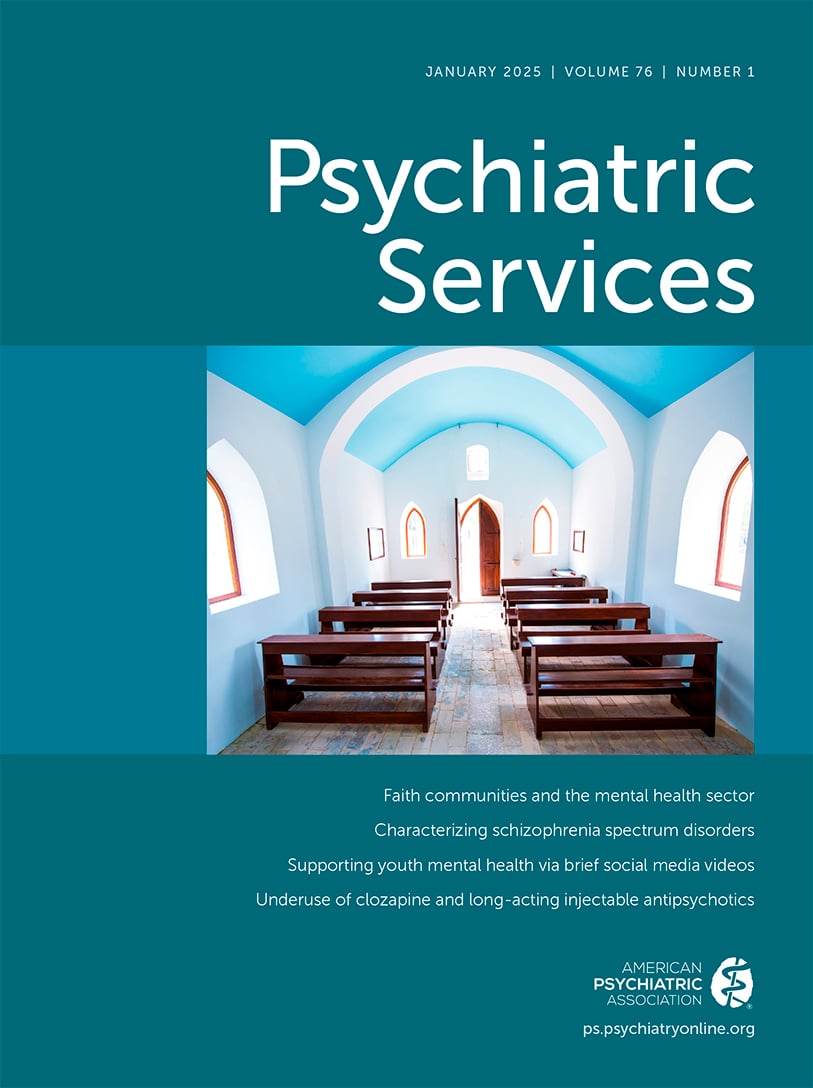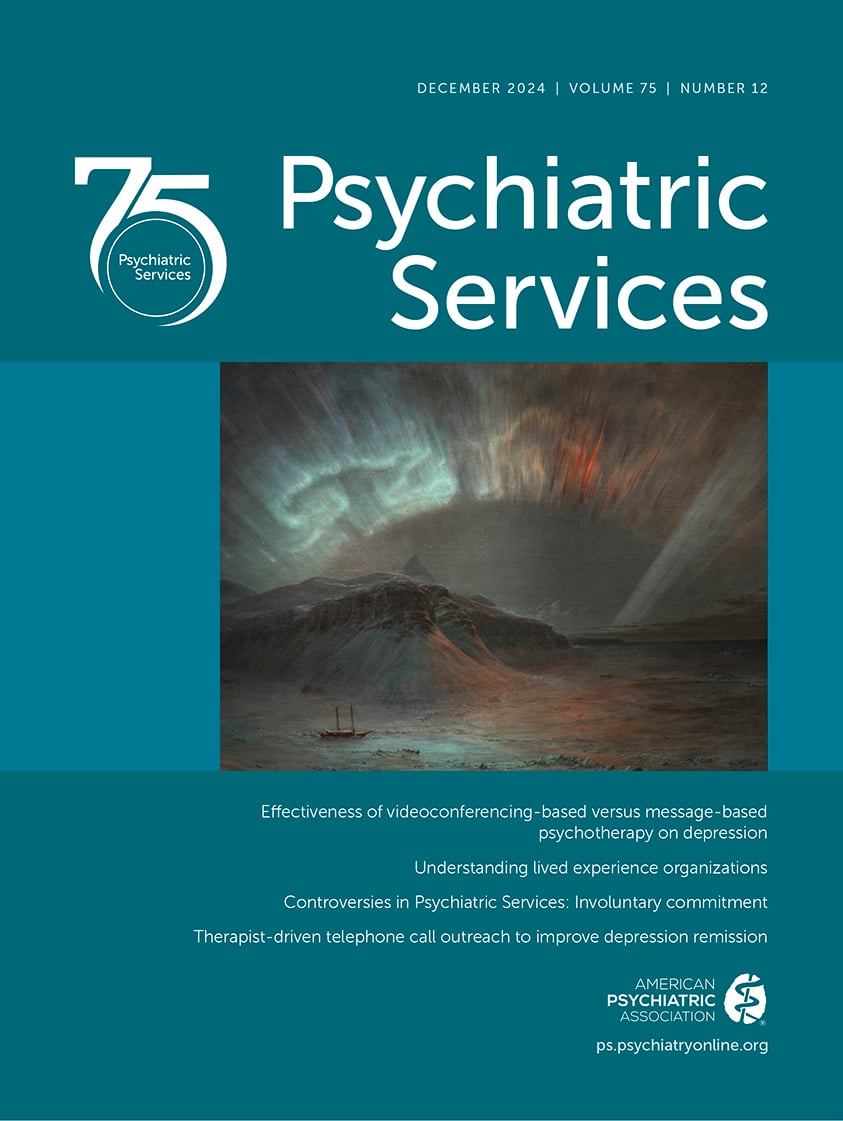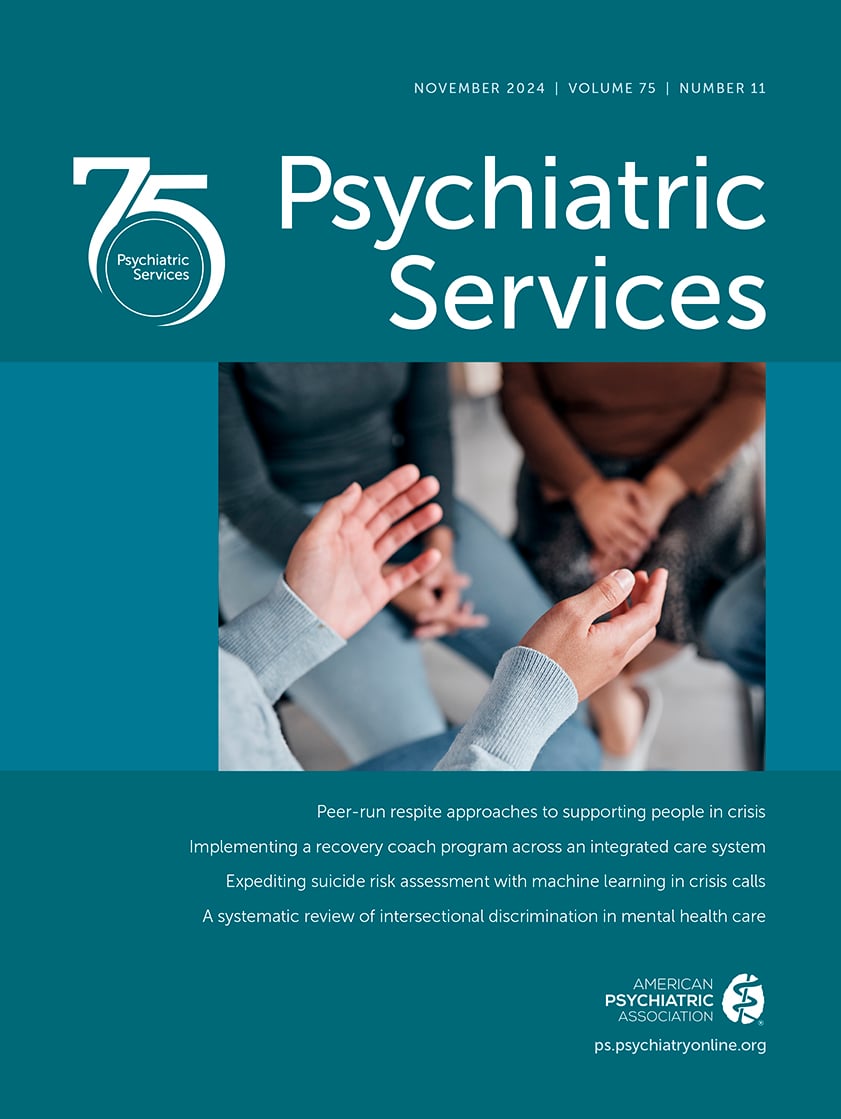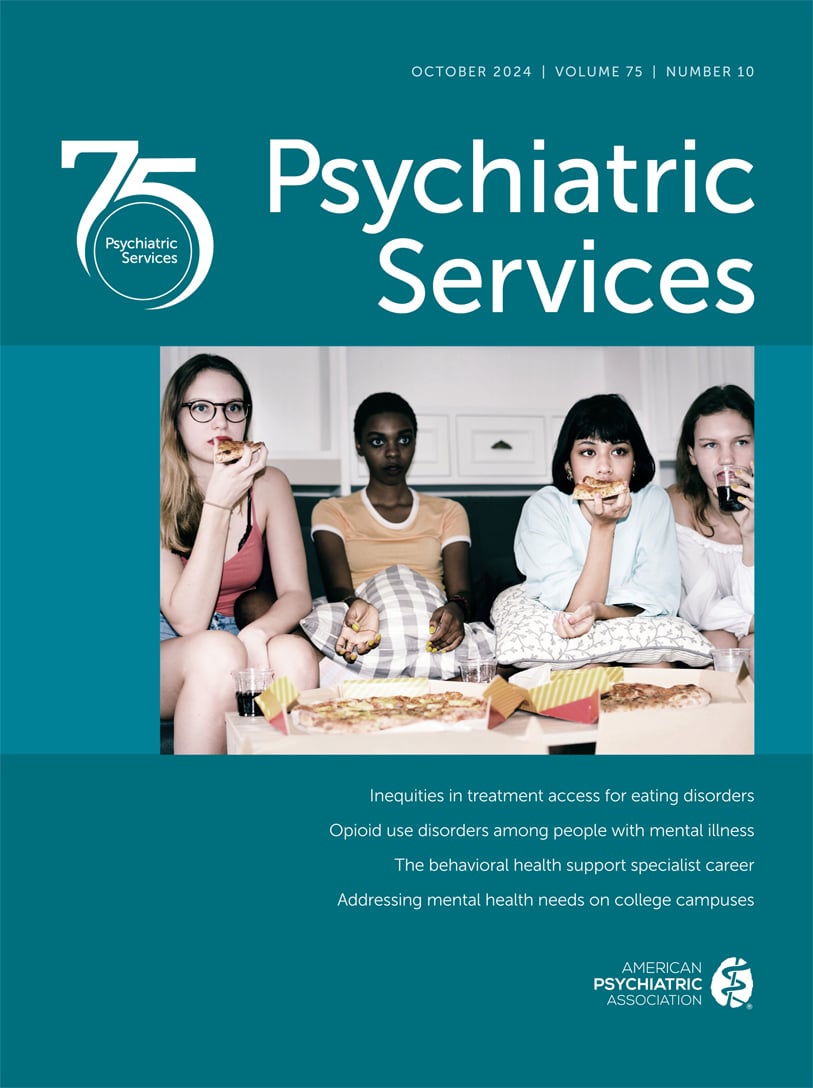Psychiatric Services
- Volume 37
- Number 2
- February 1986
Article
Publication date: 01 February 1986
Pages115–116This month's guest expert is Dr. Stephen Rosenblum, clinical associate professor of psychiatry at the George Washington University School of Medicine in Washington, D.C. He is also in the private practice of psychiatry and psychoanalysis.
https://doi.org/10.1176/ps.37.2.115Publication date: 01 February 1986
Pages135–142Psychiatric symptoms among patients with acquired immune deficiency syndrome (AIDS) may be functional reactions to contracting a fatal and stigmatizing disease or may be secondary to malignancies and opportunistic infections in the central nervous system (...
https://doi.org/10.1176/ps.37.2.135Publication date: 01 February 1986
Pages142–147To gain an understanding of the challenges and opportunities confronting mental health professionals throughout the world, the author sent a brief questionnaire to psychiatric leaders in a diverse group of countries. Questions focused on patient care ...
https://doi.org/10.1176/ps.37.2.142Publication date: 01 February 1986
Pages148–154Research on the relationship of diagnosis, genetics, violence, and psychological factors to suicide has changed dramatically during the past 20 years. Within this changing framework the author reviews current research, which focuses on understanding why ...
https://doi.org/10.1176/ps.37.2.148Publication date: 01 February 1986
Pages154–158In a medical emergency, a delirious patient can be treated without consent under the common law doctrine of implied consent, but in nonemergency situations legal guidelines are less clear. Implied consent may be extended if measures are taken to safeguard ...
https://doi.org/10.1176/ps.37.2.154Publication date: 01 February 1986
Pages159–162Violent behavior of patients is an occupational health hazard of health care professionals that the authors believe has not been fully recognized. Hospitals have developed a wide variety of techniques to manage patients who assault staff but have ...
https://doi.org/10.1176/ps.37.2.159Publication date: 01 February 1986
Pages163–166Following deinstitutionalization, several studies have documented an increase in the number of mentally ill inmates in prisons. The authors reviewed all referrals to a mental health clinic in a county prison and categorized each case as psychotic or ...
https://doi.org/10.1176/ps.37.2.163Publication date: 01 February 1986
Pages166–170Emotional and physical relationships among copatients on a short-term psychiatric unit were assessed in a two-year prospective study. Sixty-four relationships involving 102 patients were reported; the incidence rate was estimated at 10.7 percent. ...
https://doi.org/10.1176/ps.37.2.166Publication date: 01 February 1986
Pages171–174The authors assess the impact of a policy adopted briefly in New York State to facilitate short-term hospitalization and long-term aftercare of psychiatrically disturbed, developmentally disabled patients. Denied admission to New York State facilities ...
https://doi.org/10.1176/ps.37.2.171Publication date: 01 February 1986
Pages175–177One outcome of psychiatry's increasingly medical orientation has been a reconsideration of the psychiatrist's traditional taboo against treating members of the same family individually. The author argues that by modeling themselves after family physicians,...
https://doi.org/10.1176/ps.37.2.175Past Issues
View Issues Archive
Vol. 76 | No. 1

Vol. 75 | No. 12

Vol. 75 | No. 11
